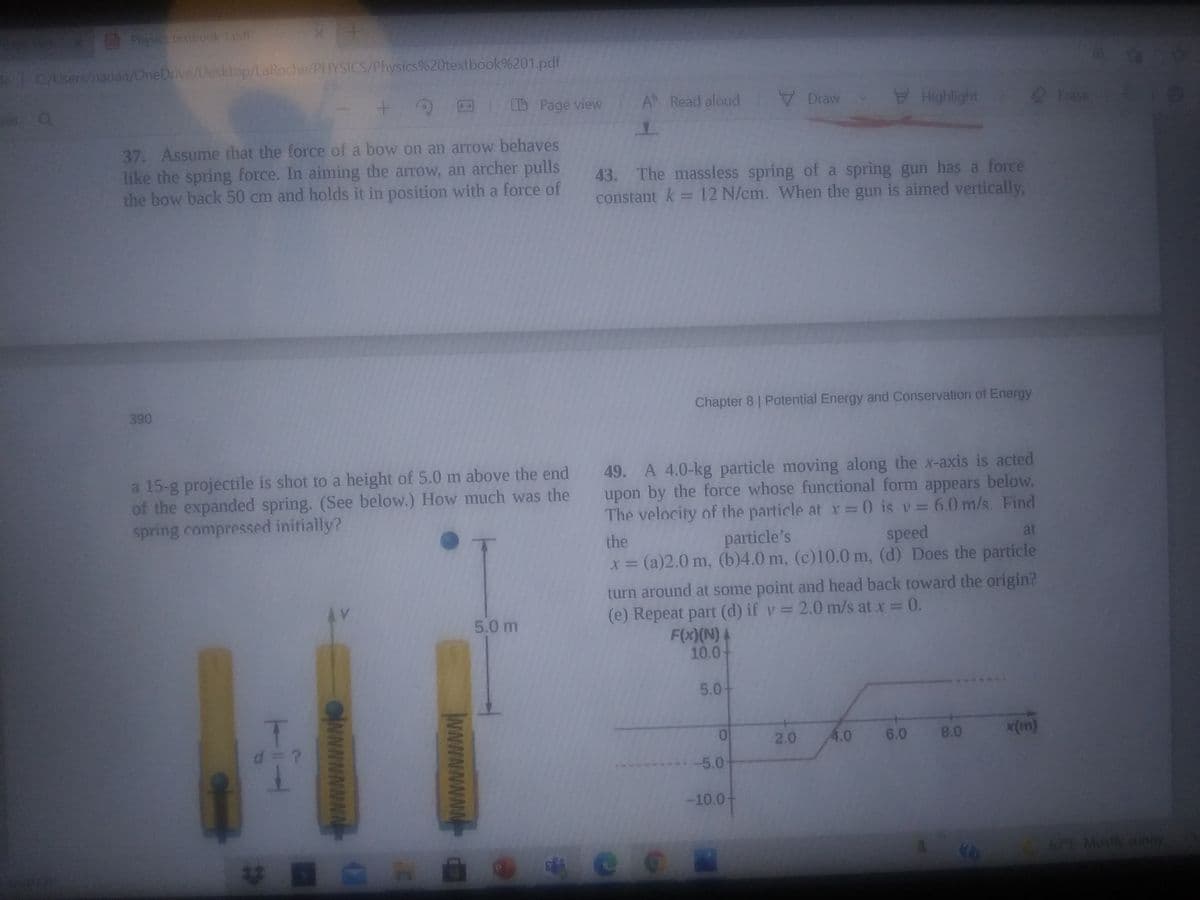A cat’s crinkle ball toy of mass 15 g is thrown straight up with an initial speed of 3 m/s . Assume in this problem that air drag is negligible. (a) What is the kinetic energy of the ball as it leaves the hand? (b) How much work is done by the gravitational force during the ball’s rise to its peak? (c) What is the change in the gravitational potential energy of the ball during the rise to its peak? (d) If the gravitational potential energy is taken to be zero at the point where it leaves your hand, what is the gravitational potential energy when it reaches the maximum height? (e) What if the gravitational potential energy is taken to be zero at the maximum height the ball reaches, what would the gravitational potential energy be when it leaves the hand? (f) What is the maximum height the ball reaches? 2) A boy throws a ball of mass 0.25 kg straight upward
1) A cat’s crinkle ball toy of mass 15 g is thrown
straight up with an initial speed of 3 m/s . Assume in this
problem that air drag is negligible. (a) What is the kinetic
energy of the ball as it leaves the hand? (b) How much
work is done by the gravitational force during the ball’s
rise to its peak? (c) What is the change in the gravitational
potential energy of the ball during the rise to its peak? (d) If
the gravitational potential energy is taken to be zero at the
point where it leaves your hand, what is the gravitational
potential energy when it reaches the maximum height? (e)
What if the gravitational potential energy is taken to be zero at the maximum height the ball reaches, what would the
gravitational potential energy be when it leaves the hand?
(f) What is the maximum height the ball reaches?
2) A boy throws a ball of mass 0.25 kg straight upward
with an initial speed of 20 m/s When the ball returns to the
boy, its speed is 17 m/s How much much work does air
resistance do on the ball during its flight?
3) A 5.00 × 10 exponent 5 (kg) subway train is brought to a stop
from a speed of 0.500 m/s in 0.400 m by a large spring
bumper at the end of its track. What is the spring constant k
of the spring?
Please find attached images for questions: 43, 71.
Thank you for your help.
Aisha.


Trending now
This is a popular solution!
Step by step
Solved in 3 steps with 3 images


